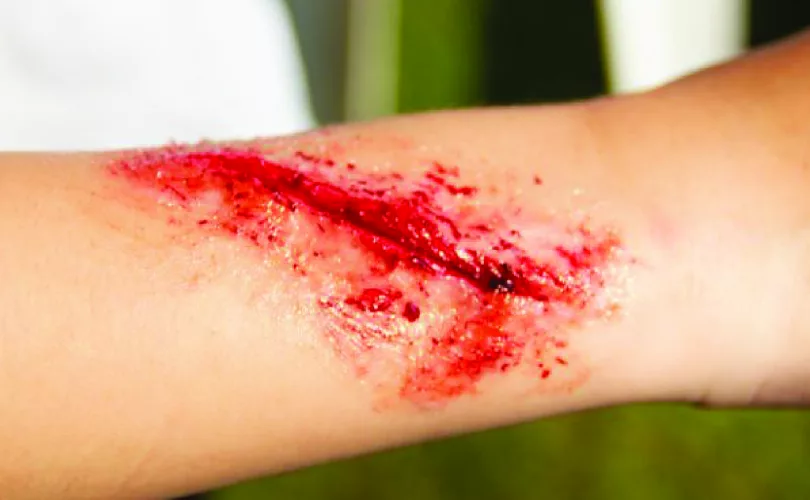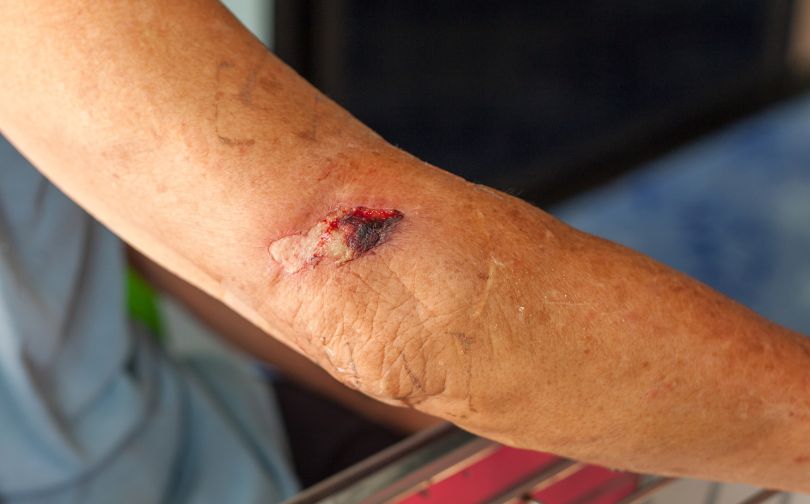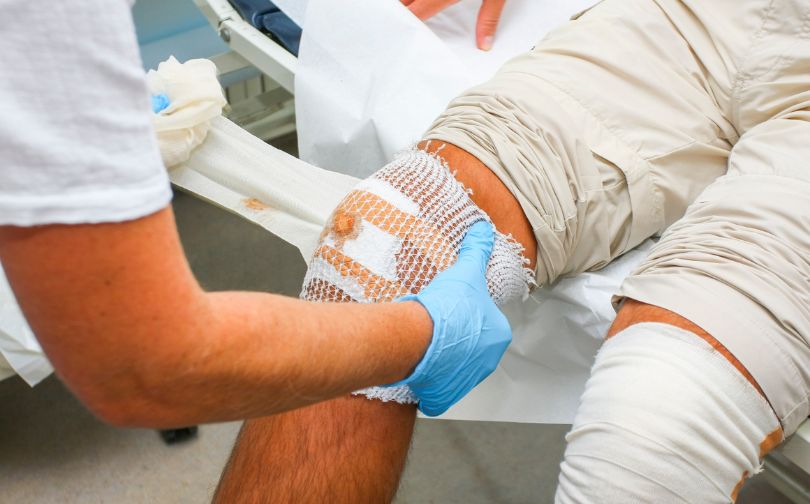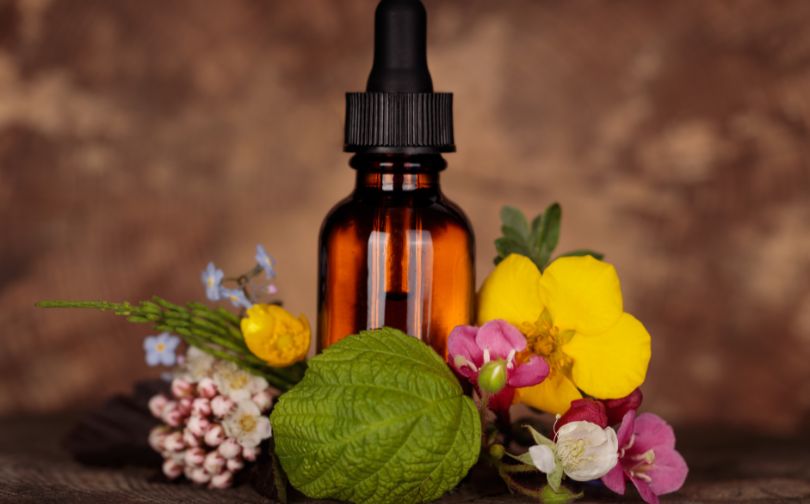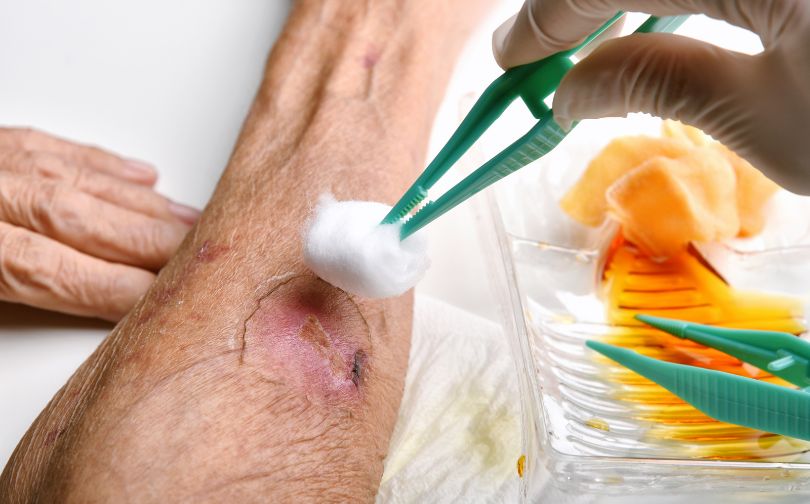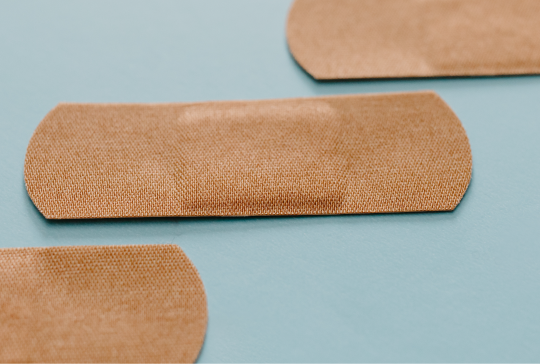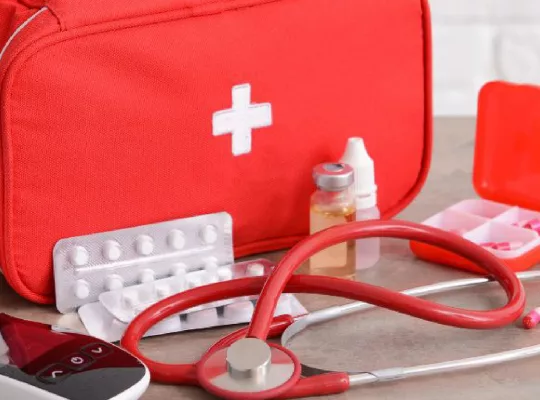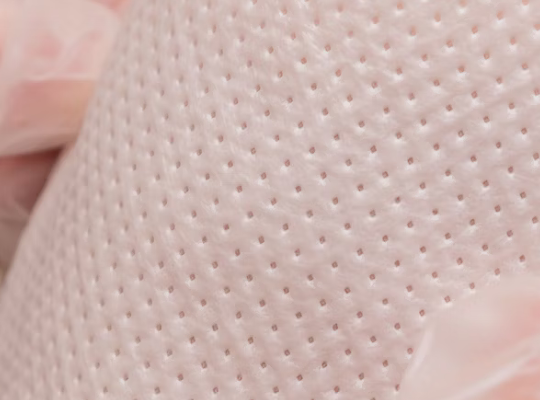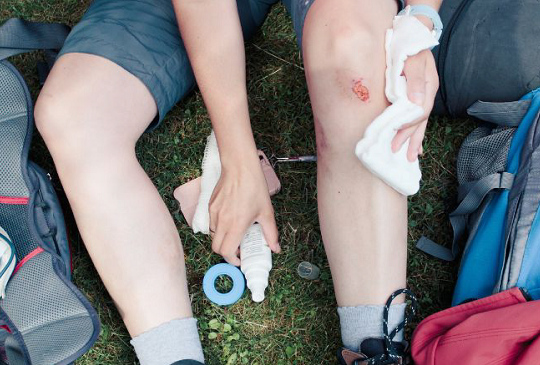Did you know that open wounds are among the leading causes of emergency room visits each year? Even small injuries, like abrasions or punctures, can become serious if ignored or poorly managed.
What Are Open Wounds?
An open wound is an injury where the skin breaks, exposing the tissue beneath to the environment. These wounds can result from several incidents, including falls, accidents involving sharp objects, or surgeries. Since the skin’s protective barrier is compromised, open wounds may increase the risk of infection and require proper care to promote healing.
What Are the Types Of Open Wounds?
Here is a list of the different types of open wounds, along with long summaries explaining their characteristics, causes, symptoms, and treatment options:
Puncture Wounds
Puncture wounds are deep wounds caused by sharp, pointed objects that penetrate the skin and underlying tissues. These wounds are narrow, often difficult to clean, and can result in significant damage to the internal organs or tissues.
Common causes of puncture wounds include stepping on nails, animal bites, or being impaled by a sharp object. Symptoms may include bleeding, pain, swelling, and redness around the wound.
Treatment typically involves cleaning the wound, applying pressure to stop the bleeding, and administering antibiotics to prevent infection. In severe cases, surgery may be necessary to repair damaged tissues.
Abrasions
Abrasions, also known as scrapes, occur when the skin is rubbed or scraped against a rough surface, resulting in the removal of the top layer of skin. They are often shallow wounds and can be painful and prone to infection.
Common causes of abrasions include falls, sports injuries, and road rash. Symptoms may include bleeding, pain, and redness around the wound. Treatment typically involves cleaning the wound, applying antibiotic ointment, and covering it with a sterile dressing to promote healing.
Gunshot Wounds
Gunshot wounds are caused by bullets that penetrate the skin and underlying tissues, resulting in significant damage to the internal organs and tissues. These wounds can be severe and life-threatening and require immediate medical attention.
Symptoms may include bleeding, pain, swelling, and redness around the wound. Treatment typically involves stabilizing the patient, stopping the bleeding, and performing surgery to repair the damaged tissues.
Lacerations
Lacerations are deep cuts or tears in the skin that may extend into the underlying tissues. They can be caused by sharp objects such as knives, broken glass, or metal. Symptoms may include bleeding, pain, swelling, and redness around the wound.
Treatment typically involves cleaning the wound, stopping the bleeding, and stitching the wound closed to promote healing. In some cases, surgery may be necessary to repair damaged tissues.
Avulsions
Avulsions occur when a portion of the skin and underlying tissues is torn away from the body. These wounds are often severe and can result in significant blood loss and damage to surrounding tissues.
Common causes of avulsions include severe accidents, animal attacks, and surgical procedures. Symptoms may include bleeding, pain, swelling, and redness around the wound.
Treatment typically involves cleaning the wound, stopping the bleeding, and performing surgery to repair the damaged tissues.
Incisions
Incisions are clean, straight cuts made by a sharp object, such as a surgical scalpel. These wounds are often made intentionally during surgical procedures and are carefully closed with stitches or staples to promote healing.
Symptoms may include bleeding, pain, and redness around the wound. Treatment typically involves cleaning the wound, stopping the bleeding, and closing the wound with sutures or staples.
Open wounds are a common occurrence and can vary in severity and cause. Understanding the different types of open wounds and their specific care requirements is crucial for effective treatment and promoting proper healing.
If you experience an open wound, seek medical attention promptly to prevent complications and ensure the best possible outcome.
Treatment Stages For Open Wounds
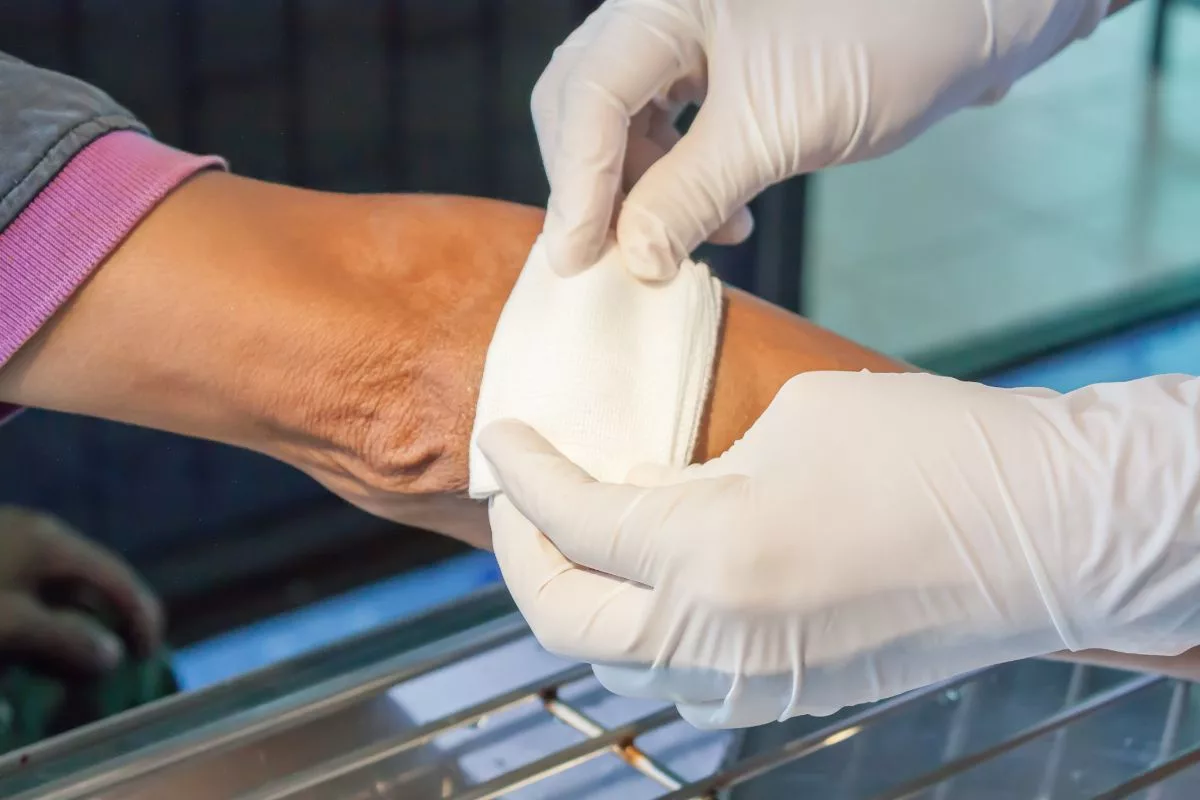
The treatment for open wounds depends on the type, severity, and cause of the injury. However, there are general stages of treatment that can be applied to most open wounds. Here are the four main stages of treatment for open wounds:
Stop The Bleeding
The first step in treating an open wound is to stop the bleeding. Apply pressure directly to the wound with a clean cloth or sterile gauze until the bleeding stops. You can also use combine pads to stop the bleeding.
Elevating the affected limb or area above the heart level can also help to slow down the bleeding. If the wound is severe and bleeding cannot be controlled, seek medical attention immediately.
Clean The Wound
Once the bleeding has stopped, clean the wound thoroughly to remove any dirt, debris, or bacteria that may have entered. Use clean water or saline solution to rinse the wound gently.
Avoid using alcohol, hydrogen peroxide, or iodine, as they can delay healing and damage healthy tissue. Pat the wound dry with a clean cloth.
Apply An Appropriate Dressing
After cleaning the wound, apply an appropriate dressing to cover and protect the wound. The dressing should be sterile, non-stick, and breathable. It should also be changed regularly to prevent infection and promote healing.
Depending on the type and severity of the wound, your healthcare provider may recommend a specific type of dressing, such as an antibiotic ointment or a hydrogel.
Monitor The Wound
Monitor the wound for signs of infection, such as increased pain, redness, swelling, or drainage. Change the dressing regularly, and keep the wound clean and dry. If the wound does not heal within a reasonable time or shows signs of infection, seek medical attention immediately.
In addition to these general stages, specific treatment may be necessary depending on the type and severity of the wound. For example, puncture wounds may require antibiotics to prevent infection, while lacerations may require stitches or staples to close the wound.
Seek medical attention if you are unsure about how to treat an open wound or if the wound is severe or shows signs of infection.
What Are the Home Remedies for an Open Wound?
Home remedies can support the healing process of minor open wounds by reducing the chance of infection and speeding up recovery. Below are some widely used natural treatments:
- Aloe Vera: With its calming effects, aloe vera gel can help reduce swelling and promote faster healing. Apply a light layer of the gel directly to the wound or place a bandage soaked in aloe vera gel on the affected area.
- Honey: Medical-grade honey has antibacterial, antifungal, and anti-inflammatory qualities. It aids in healing and keeps the wound hydrated. A small amount applied to the wound, followed by covering it with a sterile bandage, can be beneficial.
- Turmeric: The curcumin in turmeric offers both anti-inflammatory and antimicrobial benefits. Mix turmeric powder with water to form a paste, then apply it to the wound. Cover it with a clean bandage to support healing.
- Coconut Oil: Rich in monolaurin, a compound with antimicrobial properties, coconut oil can help avoid infection and encourage healing. Apply high-quality coconut oil to the wound regularly for best results.
- Garlic: Allicin, found in garlic, has both antimicrobial and anti-inflammatory effects. A paste made from crushed garlic can be applied directly to the wound to assist in the healing process.
- Tea Tree Oil: Known for its antiseptic properties, tea tree oil can help prevent infections. Dilute it with a carrier oil before applying to the wound.
These remedies are typically suitable for minor wounds, such as small cuts or scrapes. For deeper wounds or those showing signs of infection, seeking medical attention is recommended.
What Are the Risks Related to the Open Wounds?
Open wounds come with several risks that can lead to serious complications if not managed correctly. These risks arise because the break in the skin exposes internal tissues to external elements. Below are some key concerns related to open wounds:
- Infection: A major concern is infection, as harmful bacteria and other pathogens can enter the body through the wound. Infections may vary in severity, ranging from minor localized infections to more dangerous conditions like cellulitis, osteomyelitis, or sepsis, which demand urgent care.
- Delayed Healing: Open wounds may take longer to heal if they are not properly treated. Conditions like diabetes, poor nutrition, or improper wound care can slow down the healing process, increasing the chances of complications.
- Tetanus: Wounds, particularly puncture wounds, can introduce Clostridium tetani bacteria into the body, resulting in tetanus. This serious condition causes muscle stiffness and spasms and requires immediate medical attention.
- Necrotizing Fasciitis: Although uncommon, this severe bacterial infection can develop in open wounds, rapidly destroying tissue. It can lead to life-threatening complications such as sepsis if not addressed promptly.
- Scarring and Deformity: Large or deep wounds that heal improperly may result in significant scarring or deformity, impacting the appearance and function of the affected area.
- Bleeding: Open wounds involving major blood vessels may cause excessive bleeding. If not controlled, this can be life-threatening and requires emergency treatment.
How to Prevent Infection in Open Wounds?
Preventing infection in open wounds is crucial for proper healing and minimizing the risk of complications.
The key steps to prevent infection in open wounds include promptly cleaning the wound, using appropriate dressings that are sterile, non-stick, and breathable, changing the dressing regularly, and avoiding touching the wound with dirty hands.
It is also important to monitor the wound for signs of infection, such as redness, swelling, or drainage, and to seek medical attention if any signs of infection appear.
Final Thoughts
Open wounds can be caused by various types of injuries, including abrasions, lacerations, punctures, and avulsions. Each type of open wound requires a different approach to treatment, and the severity of the wound determines the necessary level of care.
It is crucial to stop the bleeding, clean the wound, apply appropriate dressing, and monitor the wound for signs of infection to promote proper healing and minimize the risk of complications.
By understanding the different types of open wounds and following appropriate treatment protocols, individuals can help to prevent infection and promote faster healing. If you have any concerns about an open wound or are unsure about how to treat it, seek medical attention immediately.
FAQs
How Should I Treat an Abrasion at Home?
To treat an abrasion, rinse the wound with water to remove dirt, then apply an antiseptic ointment. Cover the area with a sterile bandage to avoid infection. Regularly clean and monitor the wound for signs of infection, like redness or swelling.
What Is the Difference Between a Laceration and an Incision?
A laceration is an irregular tear in the skin, typically caused by accidents, resulting in uneven edges. In contrast, an incision is a clean cut made intentionally with a sharp instrument, commonly seen in surgical procedures, offering precise and straight edges.
Is It Better to Let a Wound Air Out or Keep It Covered?
It is recommended to keep a wound covered with a sterile dressing. This helps maintain moisture and protect against external bacteria, which can speed up the healing process. Leaving it uncovered may increase the risk of infection and slow recovery.
What Should I Do If My Wound Starts Bleeding Heavily?
If your wound bleeds heavily, apply direct pressure with a clean cloth or bandage. Elevate the area if possible. If the bleeding persists after 10 minutes or is pulsating, seek emergency medical attention, as this could indicate damage to significant blood vessels.

